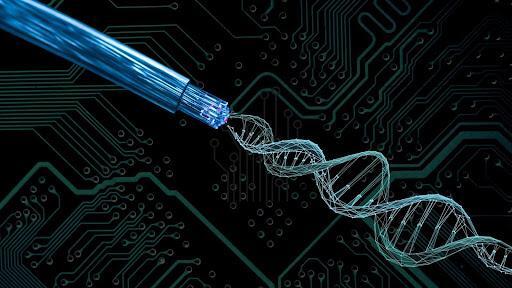
DNA’s Electron Flow May Unlock Future Biocompatible Electronics
The discovery of DNA’s electrical properties has sent shockwaves throughout the scientific community, opening up new possibilities for the development of biocompatible electronics. Researchers have long been fascinated by the potential of DNA as a building block for electronic devices, and recent findings have revealed the unique dynamics of electron flow within DNA strands. This breakthrough has significant implications for the creation of smaller, more efficient, and biocompatible electronic devices.
In a recent study, researchers from the Indian Institute of Science (IISc) delved into the intricacies of electron transport within DNA strands, uncovering a novel mechanism that could revolutionize the field of electronic materials. The study, published in the journal Nature Communications, demonstrates that the interactions between electrons and molecular vibrations, or phonons, create novel pathways for electron transport within DNA strands.
To put this in perspective, DNA is typically thought of as a static molecule, responsible for storing genetic information. However, researchers have long suspected that DNA’s electrical properties hold the key to unlocking its potential as a material for electronic devices. The recent study provides the first concrete evidence of DNA’s unique electron-vibration dynamics, which could be harnessed to create novel electronic applications.
So, what exactly do these findings mean for the development of biocompatible electronics? In essence, the discovery of DNA’s electron flow dynamics provides a new paradigm for designing electronic devices that are smaller, more efficient, and more biocompatible. Traditional electronic devices rely on silicon-based materials, which are inherently less efficient and more prone to overheating. In contrast, DNA-based electronics could offer a more sustainable and efficient alternative, leveraging the unique properties of DNA to create devices that are more compact and energy-efficient.
One of the most significant advantages of DNA-based electronics is its potential for biocompatibility. Traditional electronic devices are often incompatible with biological systems, which can lead to issues such as tissue damage and inflammation. By harnessing the natural properties of DNA, researchers can create electronic devices that are inherently biocompatible, allowing for the development of implantable devices, biosensors, and other medical applications that are both more effective and safer.
The study’s findings also have significant implications for the field of nanotechnology. DNA’s unique electron-vibration dynamics could be used to create novel nanoscale devices that are capable of manipulating and controlling the flow of electrons. This could lead to the development of advanced nanoscale devices, such as nanoelectromechanical systems (NEMS) and nanorobotics, which could be used in a wide range of applications, from medical devices to energy harvesting.
In addition to its potential applications in biocompatible electronics and nanotechnology, the study’s findings also shed new light on the fundamental properties of DNA. The discovery of DNA’s electron-vibration dynamics provides a new perspective on the molecule’s electrical properties, which could have significant implications for our understanding of DNA’s role in cellular processes.
In conclusion, the discovery of DNA’s electron flow dynamics has significant implications for the development of biocompatible electronics. By harnessing the unique properties of DNA, researchers can create novel electronic devices that are smaller, more efficient, and more biocompatible. This breakthrough has the potential to revolutionize the field of electronic materials, paving the way for the development of advanced nanoscale devices and medical applications that are both more effective and safer.






